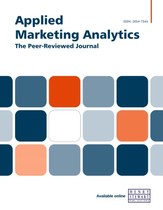Using online social networks to measure consumers’ brand perception
Abstract
The ability to measure and monitor specific dimensions of brand image has a range of useful applications in marketing, from developing competitive strategy to identifying strength and weaknesses to evaluating the effectiveness of marketing initiatives. Nevertheless, obtaining reliable measurements is an ongoing challenge for marketers. Traditional methods such as administering surveys can be expensive and biased, and are limited in scale, both in terms of the number of brands and dimensions that can be tracked, and the frequency with which the measurements can be updated. The explosion of social media in recent years has created an enormous secondary data trail that is available for analysis. However, the most common analytics approaches, such as those that rely on user-generated text, are difficult to apply due to the scarcity of relevant conversations, as well as the ambiguity, variety, and often rapid changes in linguistic terms used by consumers. This paper describes a recent advance in marketing science that makes use of brand social network connections to make highly scalable inferences about brand image. This promising new approach provides many potential advantages, including the ability to fully automate monitoring for a large number of brands over a wide range of dimensions.
The full article is available to subscribers to the journal.
Author's Biography
Jennifer Cutler is an assistant professor of marketing at Northwestern University’s Kellogg School of Management. Her research focuses on using social media to understand consumer behaviour and the effects of marketing communications. She received her PhD in business administration from Duke University with a specialisation in quantitative marketing.
Aron Culotta is an assistant professor of computer science at the Illinois Institute of Technology in Chicago, where he leads the Text Analysis in the Public Interest lab. His research focuses on extracting socially valuable insights from online social networks. He is a former Microsoft Live Labs Fellow with a PhD in computer science from the University of Massachusetts, Amherst. More than 40 of his research articles have been published, and his work has received best paper awards at the Association for the Advancement of Artificial Intelligence conference and the Conference on Computer-Supported Social Work and Social Computing.
Citation
Cutler, Jennifer and Culotta, Aron (2016, November 5). Using online social networks to measure consumers’ brand perception. In the Applied Marketing Analytics: The Peer-Reviewed Journal, Volume 2, Issue 4. https://doi.org/10.69554/CGRE5221.Publications LLP
